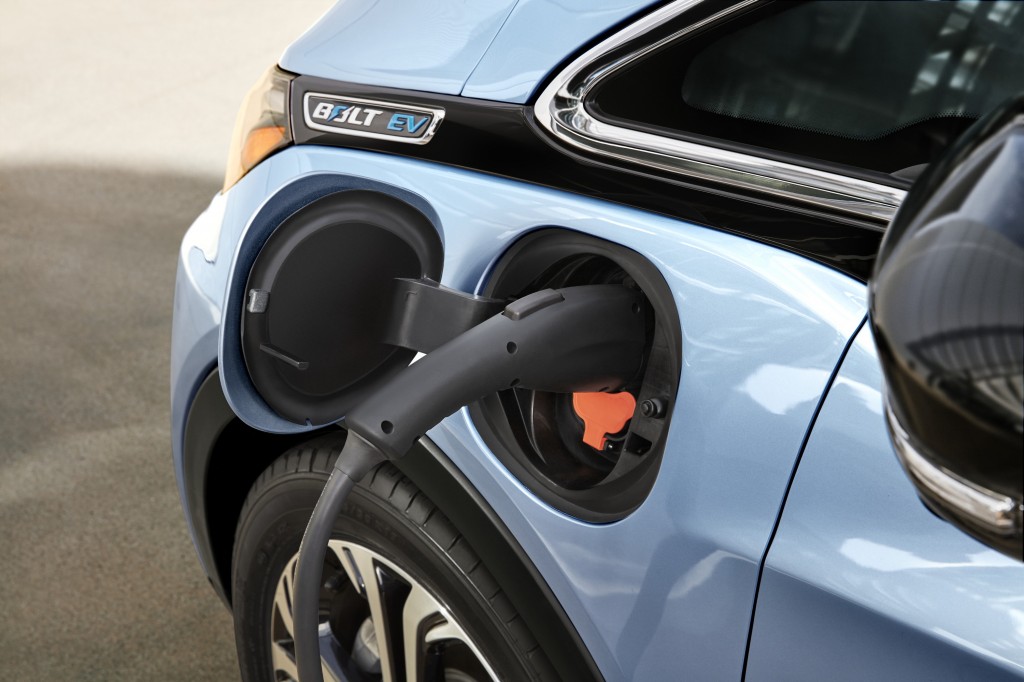Almost no U.S. car buyers sit down at their kitchen table and kick off a chat by saying, "Honey, we need to buy a city car."
The only exceptions are those in a handful of crowded cities like New York and San Francisco, for whom a very short car that is easy to park may take priority.
But as sales of the tiny two-seat Smart ForTwo have shown over several years, that's a minimal market at best.
DON'T MISS: GM Won't Fund CCS Fast-Charging Sites For 2017 Chevy Bolt EV
The rest of the U.S. tends to buy larger cars, increasingly crossover utility vehicles that offer lots of cargo volume behind tailgates, and optional all-wheel drive.
And yet General Motors discusses its 200-mile electric car, the upcoming 2017 Chevrolet Bolt EV, as a way to increase its urban sales.
So what, exactly, does that mean?

2017 Chevrolet Bolt EV
In a January article in the industry trade journal Ward's Auto, GM product chief Mark Reuss takes pains to note that "to characterize the Bolt EV as an urban vehicle sells it short."
Instead, according to CEO Mary Barra, it's the kind of car that will appeal to future generations of car buyers. A majority of those, globally, will live in cities, not U.S.-style dispersed suburbs.
While the cabin has 94 cubic feet of passenger volume—equal to that of a Tesla Model S—the Bolt EV has a compact footprint, a practical hatchback, and top-flight connectivity abilities.
CHECK OUT: First Drive: Chevy Bolt EV 200-Mile Electric Car Development Vehicle
And it's well-suited to ride-sharing and car-sharing services, with drivers for the Lyft ride-haling service (in which GM has invested half a billion dollars) likely to be some of the earliest buyers.
Today, as Ward's notes, GM's strongest sales and the bulk of its profits come from large trucks and utility vehicles of all sizes, which are the least well-adapted to crowded cities.
But with future global population growth likely to occur in cities, GM needs products that will appeal to urban audiences. Hence the focus on the Bolt EV.

2017 Chevrolet Bolt EV
This goes some way to explain why GM created a small five-door hatchback rather than a direct competitor for the sleek, four-door near-luxury sedan that the Tesla Model 3 is likely to be.
Many Tesla fans and owners (a number of whom seem to carry surprising animus for GM, it should be noted) have publicly sneered at the form factor of the Bolt EV, suggesting that an upright five-door hatchback is less compelling than a swoopy Tesla.
That may well be true, for current and aspirational Tesla buyers.
GM seems to be betting that the Bolt's smaller size plus top-flight connectivity and electronic safety systems will prove more broadly compelling to buyers of the future—especially those outside North America.

2017 Chevrolet Bolt EV
This focus is also revealed by GM's decision not to fund DC fast-charging sites that would enable the Bolt EV to cover long distances in large countries like the U.S. or Canada.
While the 200-mile electric car will offer a CCS fast-charging port, that may be an extra-cost option. Any fast-charging sites a Bolt EV uses will have been installed and maintained by other entities.
Then there's the issue of aerodynamics.
A recent Automotive News interview with the Bolt EV's design team in South Korea notes that the drag coefficient of the upright electric car is 0.32, substantially higher than the 0.24 claimed for the Toyota Prius by its maker. (Drag coefficients from different makers may not be directly comparable.)
That doesn't matter in low-speed use around town, but it has a huge impact on efficiency—and hence battery range—at higher speeds, because the energy required to overcome aerodynamic drag increases exponentially with speed.

2017 Chevrolet Bolt EV pre-production vehicles at Orion Township Assembly Plant, March 2016
In other words, the Bolt EV is a spacious but compact hatchback that will be the first 200-mile electric car offered anywhere in the world at a mass-market price.
But it won't be particularly sleek, it's likely to take a substantial hit on highway range against its city range, and any DC fast-charging use will be someone else's problem.
That makes it, in some ways, a more global approach to plug-in electric cars than the highly-rated but cramped Chevrolet Volt plug-in hybrid.
The Volt is what's called a "C-segment" vehicle, what's called a compact car in North America. In the rest of that world, that's a spacious family car, so five real seats and substantial cargo space are expected.
The Volt, despite its many virtues, has neither. In North America, it's a small commuter car with excellent electric range and no range anxiety.

2017 Chevrolet Volt
In the rest of the world, it's an expensive, uncompetitive entry against almost any other car in its segment.
Indeed, the vast bulk of Volt sales since its December 2010 launch have been in North America, where it's well-suited to driving the occasional mid-range journeys of 100 to 400 miles for which Europeans and Asians rely on fast, reliable train service.
The Bolt EV, on the other hand, is always a zero-emission vehicle.
It has enough battery range for a week's worth of city and suburban travel, and can go several days without needing a recharge.
It can be recharged opportunistically on 120- or 240-volt electricity as well, and it's apparently far from optimized for long-distance travel.

2017 Chevrolet Bolt EV
Plus, its five-door hatchback format and footprint sits squarely in the middle of the highest-volume segment globally.
Could it be, then, that the Bolt EV is the first-ever Chevrolet targeted not just at North Americans but at future buyers in the rest of the world?
_______________________________________












